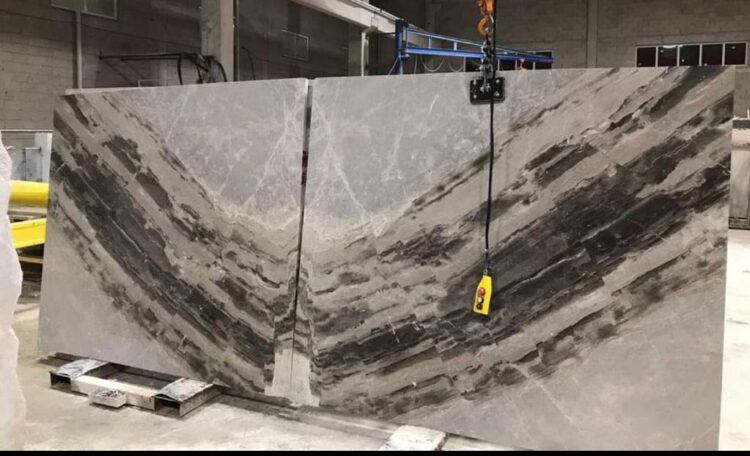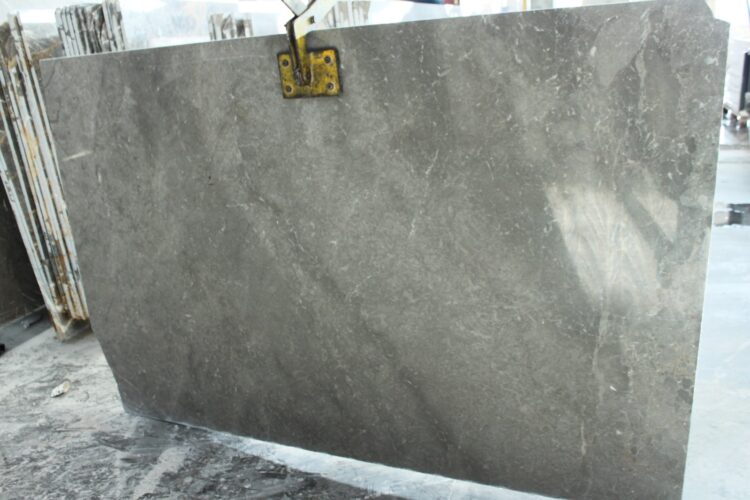Feza Ökten is an architect who founded Elips Design Architecture office and designed furniture and lighting under the FEZA dsgn brand. We talked to her about using natural stone in her projects, the marble selection criteria, the meaning of marble for himself and the situation of Turkish marble.
Could you briefly tell our readers about yourself and your professional background?
After graduating from Darüşşafaka High School, I completed my architectural education at Istanbul Technical University. After working at the Percy Thomas Partnership London office for a while after my master’s education at the same university, I opened my Ellips Design and Architecture office in 1999. My team and I are working on architectural and interior design projects. We have gathered our furniture and lighting design works under the FEZA dsgn brand. We have stores in Addressistanbul and Sky HOM. At the same time, I give project courses at Medipol University.
What does natural stone mean to you? What is your perspective on this material?
Natural stone is a material that I prefer in terms of durability and naturalness. Since it is not industrial, it feels as if it is personal, which makes the user feel more special because it is one of a kind and owned by its user only. The colours and veins it contains seem very artistic to me. My admiration for nature grows.
Which marbles do you prefer in your projects? Is there a marble that has a special place for you and that impresses you?
I have encountered and used many different materials in my professional practice over the years. Agenda, fashion, habits and trends affect the use of materials. The customer also makes his preferences in this direction. While black Taurus was used a lot for a long time, calacatta became preferred for another period. I like marbles with different colours. That’s why I usually go to the companies when starting the project and try to choose from the plate. I prefer book-match marble covering on a single wall in any space.
How do you determine the natural stone you will use in a project? What are your criteria for choosing a natural stone? How do users’ expectations affect your choice?
I used to decide more based on aesthetic criteria. However, since we are faced with the fact that we are in an earthquake zone country, I am considering the extra load that will be brought to the building. That’s why marble usage quantity and marble thickness are important to me. Apart from this, there are projects where I prefer using marble in furniture and floor and wall coverings. As for the user, unfortunately, due to the current economic situation, costs have taken precedence over aesthetic concerns. That’s why I shape the use of marble in the project in a manageable way for the customer’s budget. However, I tell him that he will realize that marble is a sustainable material and that he has made the right choice in the long run.
Where do you prefer to use marbles in your projects?
Especially in residential projects, the use of marble is higher. We prefer it on wet floors, in entrances and corridors, and sometimes on furniture. We use marble for floor and wall coverings in front view areas (entrance and information desk, etc.) where circulation will be intense in commercial places and for reception and information desks.
What is your favourite other material to use with marble?
I like to use the simplest materials as much as possible with marble. Thus, the texture of the marble comes to the fore. Marbles used with lacquered wood or metal material show themselves better. I also like to use it with glass, but glass and metal increase the coldness of marble even more; we use it with wood because we want to make the environment warmer.
Does using imported marble instead of Turkish marble in projects make that project more prestigious?
No, I do not think. As I said, the influence of trends is huge, so some marble types are preferred. Unfortunately, some of them are not quarried in Turkey. We still cannot represent Turkish marble very well; it is thought we have a very limited variety. We, architects, don’t know very well either. When we need marble of different colours and textures, we cannot find it in Turkey.
What do you think are the most striking stones of recent times? What would you say about new trends?
White, green, pink and honey colour Onyx is one of the latest trends. Frankly, I can only say that I follow the trends a little. In general, I choose materials according to the ambience I want to create in the project and the characteristics of the space. I am searching for new materials and textures, but I discuss and decide with the user and include him in the design process.
Following the earthquake we experienced in Turkey, we began to hear the warnings that ‘light materials should be used in buildings to reduce earthquake damage ‘. What should be considered when using natural stone in buildings to prevent damage? Which parts of the buildings would it be healthier to apply natural stones?
Natural stone is a material we prefer for its durability. For this reason, it should be used mainly in areas with high circulation, and the material’s sustainability is ensured by correctly determining these areas and choosing them for floor covering. In other words, just because it looks aesthetically beautiful, using marble on the floor and wall coverings of most places will only benefit if it puts an excessive load on the building. When deciding on the material, it is necessary to consider the cost-benefit well.



























 +90 532 585 51 95
+90 532 585 51 95 +90 532 585 51 95
+90 532 585 51 95